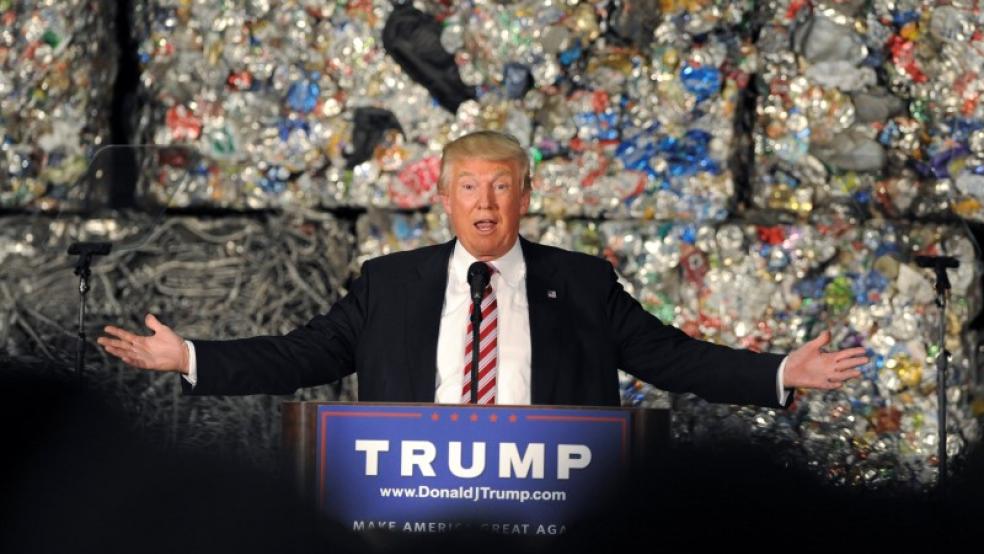Recent polls have shown that with Donald Trump at the top of the ticket, the Republican Party is finding itself in trouble in some pretty unexpected places this election cycle. The idea that Georgia, for instance, would be in play in November, would have been laughed off a year ago, but in a poll released today, The Atlanta Journal-Constitution found Hillary Clinton leading Trump there by four points in a head-to-head contest and by three when candidates from the Libertarian and Green parties were added to the mix.
Related: Can Trump Sell Himself as Savior of the Economy?
Digging further into recent nationwide survey data suggests that the presence of Trump on the ticket in 2016 could have follow-on effects that will dog the GOP for a generation.
That’s because, as political scientists have noted over the years, political party identification is a notoriously “sticky” thing. Yes, Democrats can turn into Republicans and vice versa, but it doesn’t happen a whole lot and it typically doesn’t happen quickly.
To the extent that Trump is turning young voters away from the party, the GOP could find itself suffering lower support in coming election cycles from voters whose political perceptions were formed in an era dominated by Trump. And he is turning them away from the party. In droves.
In a McClatchy-Marist poll conducted this week, for example, voters aged 18 to 29 preferred Clinton to Trump by a more than 3-to-1 margin, 53 percent to 17 percent. When the poll was broadened to include Libertarian Party nominee Gary Johnson and Green Party nominee Jill Stein, Trump came in fourth place, with just 9 percent of the vote. (Clinton still won, with 41 percent of the vote, followed by Johnson with 23 percent and Stein with 16 percent.)
Different polls break out their totals by slightly different age groups, but across the board Trump performs miserably among the youngest voters.
Related: How Many Red States Can Hillary Win?
The most recent NBC News poll has him losing to Clinton 49-35 among voters aged 18 to 34.
At Fox News, it was even worse. Clinton took 54 percent of the 18-34 vote in a head-to-head with Trump, while the former reality television star got only 28 percent.
A poll conducted by Investors Business Daily, hardly a hotbed of Clinton sympathizers, found Trump trailing badly also, by a margin of 39 percent to 23 percent.
It is easy to argue that Trump’s divisive candidacy is a once-in-a-lifetime event that might drive a surge in support for one party among young voters that will even out over time. But research suggests that is not how things work.
Related: Is Trump Finished? Don’t Bet on It
In 2014, Ethan Kaplan and Sharun Mukand published a study looking at how another one-in-a-lifetime event, the 9/11 attacks, appeared to affect political partisanship. They studied California voters who turned 18 in September 2001, and found that a those who registered to vote after the 9/11 attacks -- as the Bush administration was launching the war on terror -- were significantly more likely to register as Republicans.
What’s significant here is that Kaplan and Mukand found that two election cycles later, September-born voters who registered to vote after September 11, 2001 were still more likely to vote Republican than those born a few days earlier who registered prior to the attacks.
If those findings hold true, young voters who find themselves pushed toward the Democrats by Trump’s uniquely polarizing campaign, rather than by more traditional concerns about things like the role of government in American life, might keep pulling the lever for Democrats long after Trump has disappeared from the political scene.





